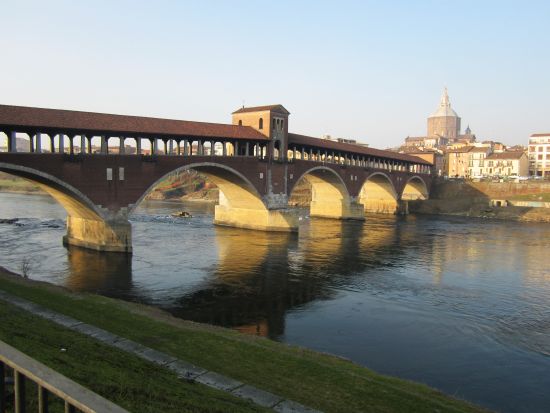
Because man does not live by Venice alone — or we don’t, anyway — we occasionally go abroad (anywhere beyond the bridge) to vary our boating and socializing diet.
Last weekend we went to Pavia, an exceptionally fine town not far from Milan, where we have been many times on other boating occasions in the summer. The object was to eat, drink, and row in an event organized by the Club Vogatori Pavesi. They call this little diversion the “Giorni della Merla,” in recognition of the fact that it is held during the frigid last few days of January which are often called “the days of the (female) blackbird.”
Considering what madness was involved, they might just as well have called it the days of the cuckoo. If someone asked which you’d rather do: Row ten kilometers (six miles) up the Ticino River, against the current, in subzero weather, in the fog, in a boat weighing two tons (tempting, I know), OR: Drop and do 14,982 pushups without stopping, which would you pick? Because we did (A) and every muscle in my upper arms is convinced that I did (B).
We departed the area of Borgo Ticino and finished at Canarazzo, a stretch of river which, like most of the Ticino, is not a stretch but a series of emphatic curves. These curves increase (or sometimes decrease) the current, and the trick is to recognize where the water is willing to come to some agreement with you. These agreements are brief and not very sincere.

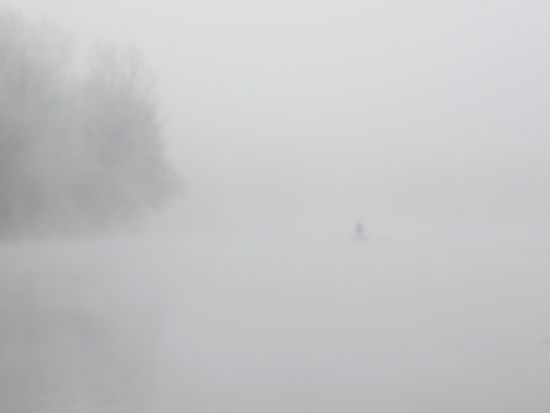
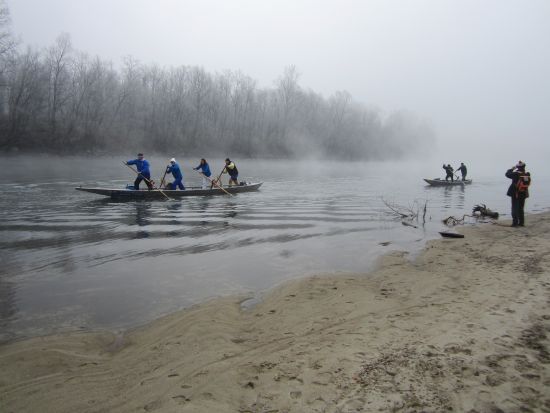
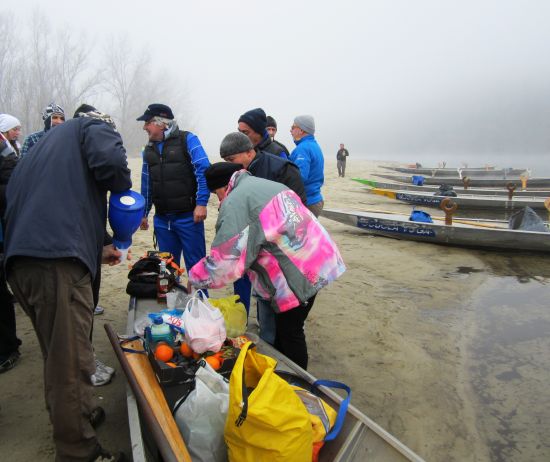
Trivia alert: The Ticino is the second-most important river in Italy in terms of volume of water, surpassed only by the mighty Po. It rises in Switzerland, works its way through Lago Maggiore, and accumulates H2O from assorted tributaries along the way.
It’s not that it’s so deep (at least in the parts we rowed), but somehow it manages to maintain a momentum that would do justice to a number of carnival rides. To attempt this little adventure in the spring when the Alpine snows are melting would be inconceivable; impressive inundations of the city are far from unknown.
Rowing upstream is an interesting mental exercise, as well, especially in those areas where the current is especially strong and no matter how hard or fast you row, you can’t make the boat move forward. Not to mention those moments when we decided to row to the other shore to see if the water flowed any more peacefully there, which meant that while we were continuing to row, the river was carrying us back downstream over precious space we had struggled so hard to gain.
These were the moments when the question arose all by itself: “Why am I doing this?” Many possible answers are available, beginning with our being put on this earth to suffer and ending with its reward being the steaming risotto of sausage and wine, and cauldron of lentils and cotechino, that were being stirred up at our destination, a shingly beach at Canarazzo. There is a primitive hut which provides shelter for a few tables and a simple cooking area.
This area being the mother lode of rice, fixing risotto was normal. It would never happen at a big boating event in Venice, where pasta e fagioli, or bigoli in salsa, are the traditional heating and nourishing elements. I wouldn’t say that I’d row upstream ten kilometers every day just to eat risotto, but it was extremely good.
Another reason I continued to slave away against the force of gravity which was carrying the water so powerfully downhill — not that I had much choice — was that I knew that the same force was going to carry us back to home base in record time. When lunch was finally over and we took to the river again, we barely had to move our oars as we sped past gravelly beaches and rustic shelters, while I amused myself by looking through the crystal water at the pebbly river bottom and seeing how remarkably fast it was moving. (Note: I realize that it was the water, not the river bottom, which was moving. I refer merely to the optical effect.)
In a mere 30 minutes we covered the distance it had taken us nearly four hours to make in the morning. Then we ate hunks of panettone and drove back to Venice with our friends, a trip of 300 km (186 miles) which, when all goes well, takes about the same time as it took us to row to lunch. That tells you everything you need to know about the internal combustion engine.
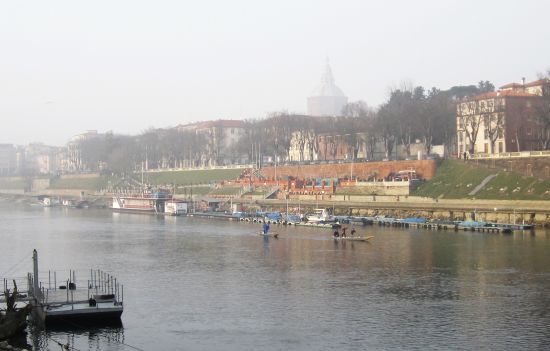
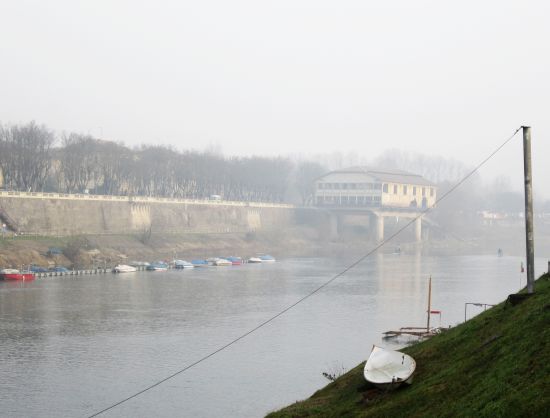

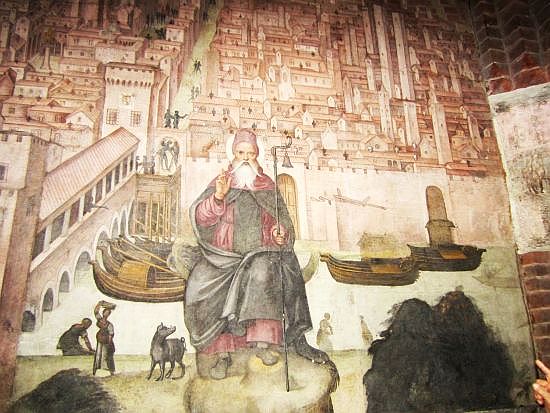

2 Comments
It looks like you did it the hard way, compared to these folk:
http://www.ciffonauti.org/oldsite/hp/foto2008/ticino/pages/017%20idrovolante_JPG.htm
There are some other old photos of Pavia at that link, which are worth looking at.
I like old photos; thanks for the link. As for doing it the hard way, that seems to be the only way I do things. On the other hand, people who use motors to get from here to there have to spend hours in the gym to keep themselves in shape. So there you are.